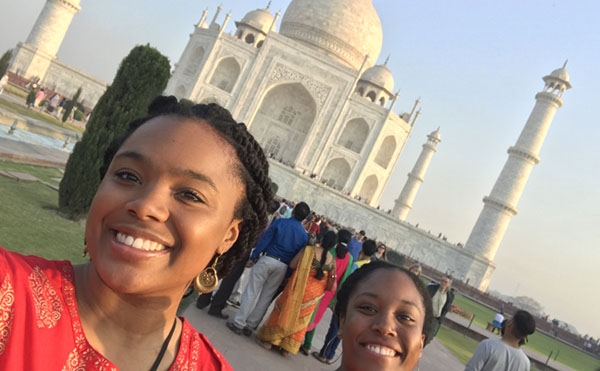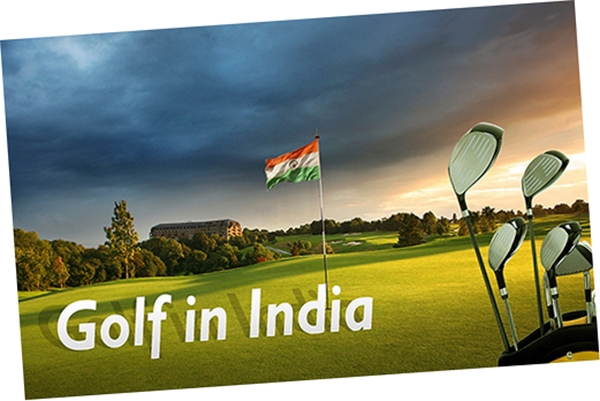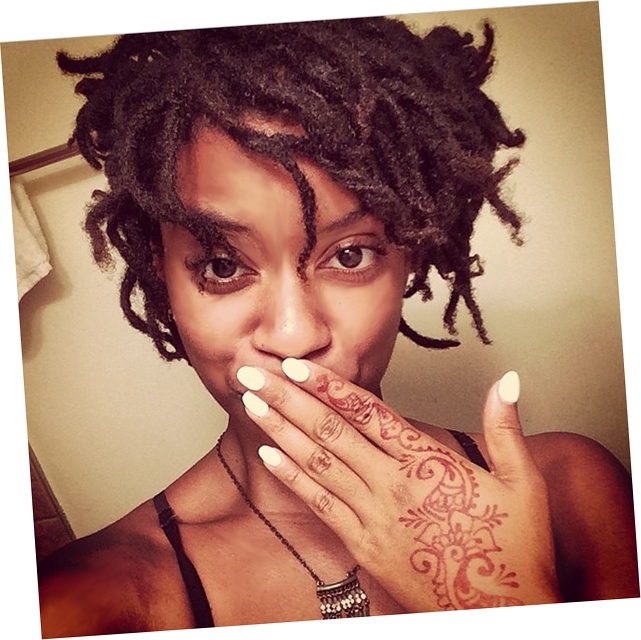Golf India With Us!
[slide-anything id=’34355′]
3 Incredible Cities:
New Delhi + Jaipur + Agra
September 2 – September 9, 2022
 Yes; This trip will SELL OUT!!!
Yes; This trip will SELL OUT!!!
=Limited Space Available=
“Join me on another exotic adventure
— this time it’s India.
Our team of experts has crafted the ultimate itinerary to give you a travel experience like none other. This trip is packed with great value—and again, a flexible payment plan is available, so that you can experience this trip of a lifetime!
Non-golfers, you are always welcome to join us, in fact, normally 40% of our travelers come for the cultural tours, ethnic cuisine, fun activities, shopping. golf and spa options, and more…. There is always soooo much to do!” Join me as we explore the Golden Triangle of India!!
—Debert Cook, Publisher
African American Golfer’s Digest
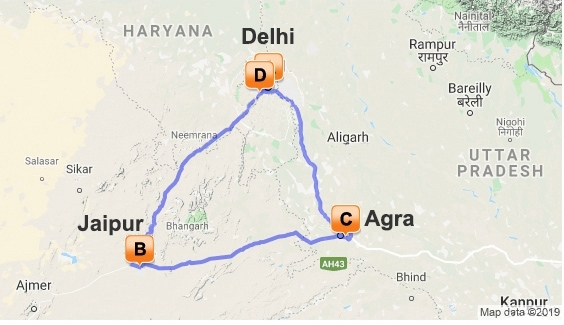
India’s Golden Triangle
Incredible India! > > Your “Air-Inclusive” Trip provides all this!
Cost includes:
- Round-Trip International airfare from JFK
- accommodation on Double / Twin Room basis
- Meals – breakfasts, 2 lunches and 2 dinners (including Welcome and farewell dinners)
- Meals exactly as specified in the itinerary
- Transfer, Tours and excursion by an Air-conditioned Mini Coach
- English-speaking tour manager throughout
- Entrance charges to monuments as specified in the itinerary
- Meet/assist by African American Golfer’s Digest Sacred Dot representatives in all cities
- Current applicable Taxes
- Surprise gift!
| Beautiful Accommodations |
Destination | Start | End | Basis | Room Type | Duration |
| Overnight Travel | Sep 2 | Sep 3 | 1 Night | |||
| The Park New Delhi | New Delhi | Sep 3 | Sep 5 | Bed and Breakfast | Double Room | 2 Nights |
| Four Points By Sheraton Jaipur | Jaipur | Sep 5 | Sep 7 | Bed and Breakfast | Double Room | 2 Nights |
| Hotel Trident Agra | Agra | Sep 7 | Sep 9 | Bed and Breakfast | Double Room | 2 Nights |
| Hotel Novotel New Delhi Aerocity | New Delhi | Sep 9 | Sep 10 | Bed and Breakfast | 1 Night | |
| Overnight Travel | Sep 10 | Sep 11 | 1 Night |
Excluded
- India VISA.
How to apply for the electronic travel authorization VISA (e-VISA): The tourist visa to India with validity for up to 10 years will cost $100 to US citizens. Applicant’s passport should have at least six months validity at the time of making application for grant of this e-Visa.
- This e-Visa is for U.S. citizens seeking to enter India solely for tourist purposes, and who plan to stay no longer than 60 days. You may apply for an electronic travel authorization at least four days prior to their arrival in lieu of applying for a tourist visa at an Indian embassy or consulate. Please visit the Indian government’s website for electronic travel authorization for additional information regarding the eligibilities and requirements for this type of visa.
- U.S. citizens wishing to visit India are responsible for requesting the correct type of visa from the Indian Embassy or Consulate. There are generally no provisions for changing your immigration category (e.g., from tourist to work visa) once you have entered the country. Indian visa regulations change frequently, often with little advance notice, and changes may be poorly advertised and inconsistently enforced. Travelers are urged to check the website of the Indian Embassy in Washington, D.C. before any travel to India to review the most current information. Indian visas may be obtained in the United States through Cox & Kings Global Services, the Government of India’s visa contractor. Diplomatic and Official visa applications, however, are accepted directly at the Indian Embassy and Consulates. Please review the information on the Cox & Kings Global Services website to determine your purpose for travel and the most appropriate visa category. All U.S. government employees, including military personnel, must obtain country clearance for travel to India. Once you have received your visa, check it carefully to ensure that the type of visa and number of entries is appropriate for your travel plans.
Day 1: Wednesday, September 2
Overnight Travel

Depart from New York (JFK) for your flight to Dubai (DXB) with onward connections to Delhi (DEL).
Round Trip Airfare to/from New York (JFK)
EK 204 02SEP JFKDXB 1120A 750A+1
EK 516 03SEP DXBDEL 950A 245P
EK 513 10SEP DELDXB 415A 620A
EK 201 10SEP DXBJFK 830A 225P
*Please note that all availability and pricing is subject to change until time of booking by which a credit card must be given to solidify all reservations and lock in all pricing.
Day 2: Thursday, September 3
The Park New Delhi, New Delhi
India’s largest city, Delhi, has been one of the country’s commercial and economic hubs for centuries and, as a result, is incredibly rich in culture and history. Made up of the ancient walled city of Old Delhi and the more modern sector, New Delhi, the city encompasses a staggering array of beautiful architecture, notable monuments and age-old temples, including three UNESCO World Heritage Sites – the Red Fort, Qutab Minar and Humayun’s Tomb. Other key attractions include the 17th century Chandni Chowk marketplace – still one of the city’s most popular retail centers today, particularly for jewelry and traditional Indian saris; the iconic Bahà’i Lotus Temple – an award-winning architectural gem; and the Jama Masjid, India’s largest mosque.
Day Itinerary
On arrival at Delhi. A representative of Sacred Dot holding a sign with our group’s name (African American Golfer’s Digest) who will meet us in the arrivals area upon exiting baggage claim and escort you to your hotel.
Delhi is one of India’s most vibrant cities today. It is not only a city that has played capital to various dynasties, but is also one of the most beautiful cities in the world. Today, apart from being at the political forefront, it also leads the country in terms of art, culture, culinary experiences, shopping, entertainment and overall standard of living. The city, like other ancient cities, is a beautiful homogeneous mix of the old and the contemporary. One of the most beautiful cities in the world, Delhi is a microcosm of all that is India.
Overnight on a bed and breakfast basis at The Park New Delhi Hotel
The Park New Delhi Hotel is situated in the heart of the city center’s business and entertainment hub, Connaught Place. Lined with handpicked contemporary art throughout the public and private spaces, the hotel provides an elevated standard of style, design and decor. State of the art technology and amenities for commerce, leisure and relaxation make The Park an ideal choice for guests seeking accommodation in Delhi. The luxury rooms and suites are models of personal touch and superior amenities and services. Access to indulgent restaurants, a day gym, spa and salon and spacious banquet rooms offer a gamut of innovative and inspired moments.
Day 3: Friday, September 4
The Park New Delhi, New Delhi
Day Itinerary
Breakfast is at the hotel, followed by a full-day tour of Old and New Delhi.
0830hrs: This morning after an early breakfast you start your tour with a visit to Jama Masjid, India’s largest and Delhi’s most spectacular mosque. Drive past the magnificent Red Fort (Closed on Monday)– a marvel in red sandstone, built on the banks of River Yamuna by the Mughal Emperor Shah Jahan. This fort was built on the lines of the Agra Fort and has similar architectural marvels.
From here, board pedicabs to converse the busy and crowded streets of ‘Chandini Chowk’. Literally translates Chandini Chowk mean Golden Street and used to be the main royal market for the Mughal Empire; today, this is Delhi’s largest wholesale market and represents some of the most expensive real estate. The craziness of the market can be easily ignored as you become an onlooker of life in this huge bazaar. You traverse through two main streets Khari Baoli, the largest spice market and the jeweler row of Kinari Bazaar where in small cramped little shops significant trade of gold and silver is carried out.
The pedicabs drop you back at your vehicle and you are driven to Mahatma Gandhi’s memorial – Rajghat. Located in a huge open park this monument is as peaceful and tranquil as the man himself.
Thereafter visit a Sikh Temple.
Lunch will be arranged at a local restaurant.
After lunch, you are driven through Lutyen’s Delhi where you drive past India Gate – the memorial to the Unknown Soldier, Rashtrapati Bhawan – the Presidential Palace, the Parliament House and other beautiful buildings built by the noted British architect. This entire area of Delhi is lush, with parks, wide roads and rambling beautiful houses. Thereafter visit the Lotus Temple.
Later visit the Qutab Minar, the tallest minaret in India. Built in the 12th Century, this minaret is a UNESCO World Heritage Site and is made of the traditional red sandstone and marble as also seen in later Mughal architecture. The complex also has an ancient iron pillar, which is considered to be 1600 years old. While the Qutab Minar is inscribed with Koranic verses for its entire length of 237 feet, the iron pillar in the same complex is inscribed with Brahmin poetry extolling the kings of the Gupta period.
Lastly visit, the mausoleum of Emperor Humayun. The monument was commissioned by Humayun’s wife, selected a Persian architect to build the tomb. He combined the best of Hindu and Persian architectural styles to create this fabulous monument, which went on to become the forerunner of the Mughal style of architecture in the country.
Return to the hotel.
Evening Welcome Dinner in the restaurant of the hotel .
Overnight on a bed and breakfast basis at The Park New Delhi Hotel.
Day 4: Saturday, September 5
Four Points By Sheraton Jaipur, Jaipur

Fringed by the rugged Aravali Hills, Jaipur is the capital and largest city in India’s northern state of Rajasthan. This city is famed for being India’s first planned city featuring a multitude of pink terracotta buildings within the walled historic center, earning it the nickname, ’The Pink City’. Jaipur falls within the Golden Triangle, a popular tourist circuit, which includes Delhi, Jaipur and Agra, and serves as a gateway to the neighboring desert cities of Jaisalmer and Jodhpur. This colorful city is a combination of tradition and modernity and offers visitors vibrant bazaars, lavish palaces and ancient temples. The salmon-hued old city is home to the opulent City Palace, encompassing an impressive assortment of palatial structures, sprawling gardens, courtyards and buildings. Don’t miss the fairy-tale splendor of the Amber Fort, set against the backdrop of the arid landscape.
Day Itinerary
0800hrs: This morning, after breakfast at the hotel you will be driven to Jaipur.
Built by Maharaja Jai Singh II (after whom it was named), in 1727, it is the largest and fastest-growing city in the state of Rajasthan. Jaipur today emulates Delhi with its contemporary lifestyle and mélange of art and cultural options. India’s first planned city, Jaipur was built on the classical architectural principals of Vaastu Shastra. The city was divided into blocks and for the first time, there was a segregation of residential and commercial areas. The City Palace built at its heart covered almost a seventh of the area of the entire city. It is popularly known as Pink City, due to the hue of the buildings across the old town.
You are assisted with checking in on arrival.
Jaipur is one of the best places to shop, from bargains to high-end jewelry, carpets and objects d’art. Thus, the evening could be spent shopping and strolling through the vibrant streets of this city.
Overnight on a bed and breakfast basis at Four Points By Sheraton Jaipur.
Overnight: Four Points By Sheraton Jaipur
Discover Jaipur, the Pink City, and stay at Four Points by Sheraton Jaipur in the City Square. The hotel is located in the heart of Jaipur, convenient to major government and business organizations, universities, and Jaipur International Airport. The City Palace, Amber Fort, Hawa Mahal, and other popular sightseeing attractions are all within easy access of the hotel.
The Four Points by Sheraton provide plenty of ways to relax and stay fit. Try a workout in the 24-hour fitness center, a refreshing dip in the outdoor pool, or a visit to the spa and steam rooms. The all-day dining restaurant, the Eatery, features both continental favorites and regional specialties. Drop by Bar Bar, the hotel lounge, and sip on a cold beer from the world’s Best Brews™ while enjoying views of the Aravali Hills.
Accommodation at the Four Points by Sheraton features 114 guest rooms and suites offering simple, uncomplicated convenience and value, including LCD flat-screen TVs and high-speed internet access. Jump into the coziness of a Four Points by Sheraton Four Comfort Bed™. Also enjoy free extras, like breakfast, bottled water, and daily newspapers.

Day 5: Sunday, September 6
Four Points By Sheraton Jaipur, Jaipur
Day Itinerary
An early breakfast is planned at the hotel, followed by sightseeing of Jaipur. The tour starts at Amber Fort with a stop at the HawaMahal for photographs. The HawaMahalor Palace of Winds is a beautiful façade built for the ladies of the royal family. It is where they sat and watched the procession and festivals on the main avenue without being seen. Proceed to Amber Fort, located in Amber a town lying on the outskirts of Jaipur. This is where the Kushwaha Kings were based before moving to Jaipur to cater to the burgeoning population and scarcity of water. The Amber Fort is a classic example of Hindu and Rajput architectural styles. Its large ramparts lead up to a fort that is spread over four levels, each with large courtyards. The fort houses various palaces including the summer, winter and monsoon palace as well as temples. Each of these palaces was built to combat the extreme weather and even today one can see how effective they were. Built on a high hill, the fort can be seen for miles and has been recently renovated. The ascent up to the fort is by car. Tour concludes with a return to the hotel, or you may continue the visit and participate in these optional tours:
OPTIONAL $ 41.00 per person: After visiting Amber, return to Jaipur to see the City Palace. The City Palace is the residence of the erstwhile royal family but some parts including the museums are open to visitors. The palace contains various smaller palaces, which house the armory museum and the artists’ exhibition. The liveried palace staff can be seen going about their business. On display in the museum are clothes, pictures, and objects from everyday life, horse buggies and elephant Howdahs. The intricate styling of the city palace doors, the enormous silver urns, the beautiful frescos and the lovely palaces make this an enticing place to visit.
Lastly, visit an observatory built by the astronomer king Jai Singh II – the Jantar Mantar. The collection included many architectural astronomical instruments that were used to measure time, predicting eclipses, and tracking stars, do astrological calculations & predictions and more. The fourteen large instruments are still in working condition.
Jaipur is one of the best places to shop, from bargains to high-end jewelry, carpets and objects d’art. Thus, the evening could be spent shopping and strolling through the vibrant streets of this city
Optional Dinner: $49.00 per person
Overnight on a bed and breakfast basis at Four Points By Sheraton Jaipur.
Day 6: Monday, September 7
Hotel Trident Agra, Agra

Home of the world-famous Taj Mahal, Agra is one of India’s prime tourist destinations for specifically this reason, though its attractions also extend to an array of other impressive historical sights. These include the red-hued Agra Fort, the sacred Jama Masjid mosque and Itmad-ud-Daulah’s tomb, with its white marble facade embellished with intricate inlaid designs and semi-precious gems. The Taj, however, is in a league of its own and needless to say is a must-see for any visitor to the city. Commissioned by the Mughal emperor Shah Jahan in the 15th century as a memorial to his beloved wife Mumtaz Mahal, it is an architectural masterpiece of exquisite craftsmanship and perfect proportions.
Day Itinerary
This morning, after breakfast, check out from the hotel and drive to Agra. En-route visit the Abhaneri Well.
Lunch will be at a local restaurant en-route.
Agra was the erstwhile capital of the Mughal Empire. Located in central India, on the banks of the Yamuna River, this city has always been very important in the country’s history. Today, it is known around the world as the home of the Taj Mahal. Unlike most other Indian cities, Agra has not grown into a large metropolis, but maintains its small-town status. It is replete with monuments and places of interest.
On arrival check in to your hotel. Rest of the day is at leisure and dinner is at the hotel.
Overnight on a bed and breakfast basis at Hotel Trident Agra.
Overnight: Hotel Trident Agra
With the Taj Mahal in close proximity, Hotel Trident Agra is the ideal base from which to experience the city steeped in history. The charming hotel is set amidst beautifully landscaped gardens and water fountains. Built in local red stone, reminiscent of the Mughal era, the hotel features 135 tastefully appointed rooms and suites, which overlook the central courtyard and gardens.
The soothing views are complemented by a selection of dining options, recreation and wellness facilities, accompanied by warm hospitality. From a morning yoga session to an indulgent spa therapy or fun activities for the children, a stay at Trident Agra has plenty to offer. Wake up to a sumptuous breakfast spread that ensures a flying start to the day, before stepping out to explore the sights and discover the rich history of Agra.
Day 7: Tuesday, September 8
Hotel Trident Agra, Agra
Day Itinerary
This morning visit the UNESCO World Heritage Site of the Taj Mahal. This monument is an amazing feat of human industry, a perfect example of beauty, symmetry and aesthetics. It is only once you enter the main gates and gaze upon the Taj, does the enormity of the task of building this mammoth structure impress. Built by the Mughal Emperor Shahjehan, this is a tribute of love for his favorite wife Mumtaz Mahal. As the rays of the sun hit the marble, they make it glitter, and change color, reflecting stark white against a very blue sun.
Optional: $39.00 per person
Optional Tour: Visit to Itmad-ud-Daulah (also known as Baby Taj).
Overnight on a bed and breakfast basis at Hotel Trident Agra.
Day 8: Wednesday, September 9
Hotel Novotel New Delhi Aerocity, New Delhi

Day Itinerary
This morning after a leisurely breakfast you will be driven to Delhi and on arrival you will check into your hotel.
Rest of the day is at leisure.
Evening: Farewell dinner (non-exclusive)at the restaurant in the hotel.
Overight on a bed and breakfast basis at Hotel Novotel New Delhi.
Overnight: Hotel Novotel New Delhi Aerocity
Novotel New Delhi Aerocity is ideally located at Aerocity, in close proximity to the IGI Airport and within driving distance from business hubs of Gurgaon & New Delhi. A combination of 400 Suites & Rooms features multipurpose convention space with 11 meeting rooms, 5 boardrooms and one of the largest ballrooms in Delhi NCR. The hotel offers an array of food & beverage options and leisure facilities include a fully-equipped health club and outdoor swimming pool & bar.

Day 9: Thursday, September 10
Overnight Travel
Day Itinerary
This morning after breakfast you will be transferred to the airport to connect your International flight back home.
Day 10: Friday, September 11
End of Itinerary
Day Itinerary
Arrival in the US!
Welcome Home!!!
Vast, diverse, deeply spiritual and utterly unforgettable, India is unlike anywhere else on earth – a melting pot of ethnicities and religions, a treasure trove of history and culture, and a curious mixture of chaos and serenity. Stretching across more than three million square kilometres, it encompasses a staggering array of landscapes, vistas and environs, and offers unparalleled travel experiences – from the beautiful beaches of Goa, to the compelling craziness of Kolkata, the sacred Ganges river banks of Varanasi, the snow-capped peaks of the Himalayas in Kashmir and the ancient, exquisitely crafted temples dotted across the entire country. Not to mention the vibrant, friendly people, and incredible cuisine.
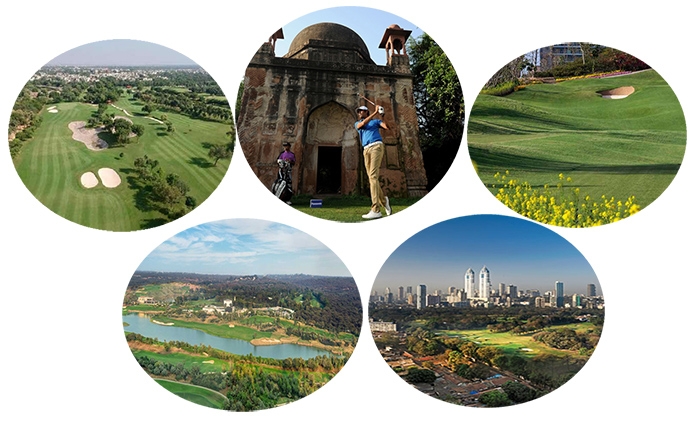
Options for rounds of golf abound throughout this trip!

GOLF
There are two games gifted by the British to India one is Golf and second is Cricket and now India is regarded as the second oldest country in the world to play Golf after the United Kingdom. Of the numerous courses available for play throughout our trip, you’ll be able to book tee-times approximately 3-weeks prior to departure. We’ll hold two conference calls dedicated to our golfing preparation and discuss pairings, rates, transportation and courses of interest to our travelers!
Banking and Currency
Currency
The Indian rupee is the official currency of the Republic of India. The modern rupee is subdivided into 100 paise (singular paisa), though as of 2011 only 50-paise coins are legal tender. Banknotes in circulation come in denominations of ₹5, ₹10, ₹20, ₹50, ₹100, ₹500 and ₹2000. Please note that as of November 2016, the older ₹500 note is no longer valid legal tender and only new ₹500 notes will be accepted.
The older Rupee coins are available in denominations of ₹1, ₹2, ₹5, ₹10, ₹20,₹25, ₹50, ₹100, ₹500 and ₹1000; the coins for 20 and above are for commemorative purposes only; the only other rupee coin has a nominal value of 50 paise, since lower denominations have been officially withdrawn.
The import and export of local currency is prohibited. The import of foreign currency is unlimited. However, amounts exceeding US$5,000 or equivalent in cash, or US$10,000 or equivalent in all forms of currency must be declared. The export of foreign currency is allowed up to the amount imported and declared.
Currency can be changed at banks, airports or authorized money changers. Many hotels also have facilities to change money but this is a more expensive option. It is illegal to exchange money through unauthorized money changers. US Dollars and Pounds Sterling are the easiest currencies to exchange.
Banking
Banking hours: Monday-Friday 10h30-15h30; Sat 10h30-13h00.
Strictly speaking, you can neither import nor export Indian currency, but you can get some at the airport straight away to at least get you transport to your accommodation. There are Authorized Foreign Exchange dealers in most big cities, and banks will also change your currency at a fair rate if you have time for the paperwork.
A good way of getting your travelers currency is via an ATM but beware of hidden bank charges, both from the bank providing the ATM and the card-issuing bank – you also do not know what exchange rate you are getting. ATMs are found in most towns and are recommended for cash withdrawals.
Visa, MasterCard and American Express are usually accepted in tourist hotels and many other shops. Debit cards are also widely accepted.
Traveler’s cheques are widely accepted and may be changed at banks and larger hotels. The most widely accepted currencies include US Dollars and Pounds Sterling. Some banks may refuse to change certain brands of traveler’s cheques whilst others may exchange quite happily.
Travel, Transport and Getting Around
India is big and there are lots of interesting ways to travel around it, most of which could not very well be described as efficient or punctual. Allow considerable buffer time for any journey with a fixed deadline (eg. your flight back), and try to remember that getting there should be half the fun.
India’s large size and uncertain roads make flying a viable option, especially as prices have tumbled in the last few years. Even India’s offshore islands and remote mountain states are served by flights, the main exceptions being Sikkim and Arunachal Pradesh (although crossing over from neighboring states is fairly easy). Due to the aviation boom over the last few years, airports have not been able to keep up with the air traffic. Most Indian airports continue to function with one runway and a handful of boarding gates. Check-in and security queues/lines can be terribly long, especially in Delhi and Mumbai.
Railways were introduced in India in 1853, more than one and half a centuries ago, by the British, and today India boasts of the biggest network of railway lines in the world, and the rail system is very efficient, if not always on schedule. Traveling on Indian Railways gives you the opportunity to discover the Indian landscape and scenic beauty first hand and is generally more economical than flying domestic. It is one of the safest ways of travel in India. With classes ranging from luxurious to regular, it’s the best way to get to know the country and its people. Most train passengers will be curious about you and happy to pass the time with a chat.
In central locations of big cities like airports or stations, reliable pre-paid taxis are available and will save you money as well as the bargaining hassle. However, beware of touts who would claim themselves to be running pre-paid taxis. Always collect the receipt from the counter first. The receipt has two parts – one part is for your reference and the other part you will need to hand over to the taxi driver only after you reach your desired destination. The taxi driver will get his payment by submitting or producing this other part to the pre-paid taxi counter. Normal taxis running by meter are usually more common. In many non-Metro Cities (or even in Metros depending on time) taxies or autos may ply without the usual meter.
While you can’t take a cross-country bus-ride across India, buses are the second most popular way of traveling across states and the only cheap way of reaching many places not on the rail network (eg.Dharamsala).
Vaccinations
Review this list of recommended vaccinations for visiting India: https://www.passporthealthusa.com/destination-advice/india/
Food, Drink and Cuisine Advice
Foods and beverages served within the hotels are considered safe for eating and drinking. Water from the tap or other venues for drinking, brushing teeth or making ice should first be boiled or otherwise sterilized. Milk is often unpasteurized and should be boiled. Avoid dairy products likely to have been made from non-boiled milk. Only eat well-cooked meat and fish. Do not eat salads, and vegetables should be cooked, and you should peel your own fruit. Don’t eat street vendor food unless it is piping hot. Tap water is not safe to drink, rely on bottled water which is widely available. However, do check the seal on bottled water.
Indian food is world-renowned for its tantalizing flavors, spiciness and enormous variety. Curries are created from the subtle and delicate blending of spices such as cumin, turmeric, cardamom, ginger, coriander, nutmeg and poppy seed although these vary from region to region and every spice has medicinal properties and use.
Vegetable dishes are more common than in Europe, particularly in the fruity, coconutty dishes of southern India, while northern India has an entirely different but equally satisfying cuisine to sample. Breads like paranthas, chapatis, naans and rotis are also part of the main diet in several states like Punjab, Haryana and Uttar Pradesh. Achars (pickles), relishes and chutneys again vary by region and add more resonance to amazing meals.
Sweets or mithai too have regional specialties. They tend to be milk-based and some are syrupy and fried. Well-known northern sweets are gulab jamun, jalebi (it’s worth watching how these syrup-based confections are made in the street), kulfi, kheer, halwa and laddu. From the east are rasgulla and rasmalai. The south has several burfi and halwa-type desserts like coconut burfi and badam halwa made from almonds.
While care should be taken in where one eats, exceptional food can be had in the most humble surroundings such as food at ashrams as can be found in 5-star restaurants. Non-vegetarians will find fabulously spiced mutton dishes according to regional specialties including fish dishes typical to coastal areas.
10 to 15% is usual in restaurants that impose no service fee; optional where service fee is added to bill.
Climate and Weather
The weather is mainly hot most of the year with significant variations from region to region. The coolest weather lasts from around the end of November to the beginning of March, with fresh mornings and evenings, and mostly sunny days. The really hot weather, when it is dry, dusty and unpleasant, is between March and June. Monsoon rains occur in most regions in summer anywhere between June and early October.
Clothing and Dress Recommendations
Male or female, one rule covers all visitors to India: don’t leave the house with your arms or legs bare. You’ll naturally get attention as a foreigner, as full-on staring is common and accepted on Indian streets, but you’ll suffer far less negative attention if you remain covered up. For most locations and seasons in India, thin, loose linen or cotton pants and button-down shirts will keep you comfortable in hot, humid weather and help you blend in. While you may see Indian young adults sporting tight jeans and fitted brand-name tops, you’d stand out significantly more in the same outfit. If you visit anywhere in northern India – not just the mountains, Delhi too – during the winter, prepare for seriously cold weather. Bring jeans and heavy shirts and pick up an Indian wool wrap.
What you can get away with at an Indian beach depends entirely on which beach you visit. In the state of Goa, a popular beach and club getaway destination, locals are accustomed to seeing tourists in bikinis on the beach and Indian men often sport Speedos. But skimpy clothes need to stay on the beach. Don’t walk around town or your hotel in nothing but a bikini and sarong. In less Western-frequented beach destinations, such as the beaches around Bombay, Alibag and Chowpatty, or anywhere in the south, hit the beach in light pants and a tunic.
When visiting temples and other religious sites on your own or part of a tour, be on the lookout for signs advising visitors to dress in a specific way to enter the temple. The government of India advises that some religious institutions require visitors to cover their heads or remove their shoes, and covering your legs and arms in respect goes without saying. Certain sites may carry more specific requirements, such as donning a certain colored sash or sarong-like covering. Take your cue from other visitors exiting the site.
Electricity and Plug Standards
For the most part, electrical sockets (outlets) in India are the “Type D” 5 amp BS-546 sockets. This is actually an old British standard. The “Type D” Indian plug and socket is not to be confused with the “Type M” South African plug and socket. In pictures, they look very similar, but the South African type is much larger than the Indian type, and they are physically incompatible. If your appliance’s plug doesn’t match the shape of these sockets, you will need a travel plug adapter in order to plug in.
Electrical sockets (outlets) in India usually supply electricity at between 220 and 240 volts AC. If you’re plugging in an appliance that was built for 220-240 volt electrical input, or an appliance that is compatible with multiple voltages, then an adapter is all you need. If your appliances are not compatible with 220-240 volt electrical output, a voltage converter will be necessary.
SMILE!
By participating in our programs and events you are consenting to be photographed/videotaped for material to be used in our publication and marketing efforts.


 Yes; This trip will SELL OUT!!!
Yes; This trip will SELL OUT!!!

